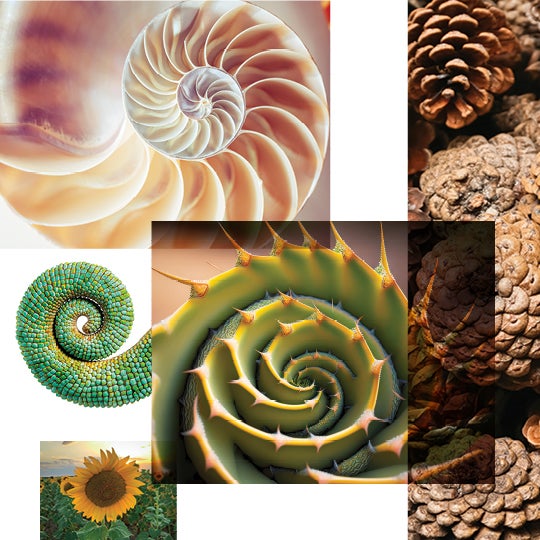Syllabus
Math All Around Us
Spring 2023
By Lynn Gosnell
MATH 115 The Art of Math
DEPARTMENT Mathematics
DESCRIPTION This course is primarily for students majoring in non-STEM fields. The goal of the course is to demonstrate that math is more than formulas — it is a process of thinking which is relevant to students on a daily basis.

What prerequisites do non-STEM majors need to be successful in The Art of Math? “As long as students know basic algebra, they will be able to follow the class,” says Betul Orcan-Ekmekci, assistant teaching professor of mathematics. “More importantly, they need their courage, self-belief and patience.” It’s a confidence-building message that she takes care to repeat in every class.
Math is another language that helps us understand the world around us and can inspire creativity.
Throughout the spring semester, her students engaged in a wide range of lessons related to geometry, number theory and topology. In a recent class, Orcan-Ekmekci led students through a step-by-step process to both understand and appreciate one of the most famous sequences in geometry — the Fibonacci sequence. She began by sharing images of the spiral patterns of seeds in a sunflower and the tops of pine cones, demonstrating the presence of math in nature. Turning to a chalkboard, she wrote the numerals 1, 1, 2, 3, 5 and 8, before asking students to add more numbers — 13, 21, 34 and so on — to the sequence. Soon, the board began filling up with equations, from simple ratios to complex quadratic formulas.
Orcan-Ekmekci’s highly interactive teaching style constantly engaged her students’ attention. “Did you follow it? I don’t want to lose you,” she repeated. Every few minutes, she paused to give students a moment to check on any stumbling blocks. By the end of the hour, students had been led from the Fibonacci sequence to the golden ratio, which would be the subject of their next lesson and weekly homework. “She’s extremely patient, and she’s also really encouraging,” says Sara Davidson, a sophomore majoring in political science and German.
To bring home the point that math may underlie creative expression, the semester culminated in art and music projects inspired by the class’s reading of the “The Runaway Species: How Human Creativity Remakes the World,” written by professor and composer Anthony Brandt of the Shepherd School of Music and neuroscientist David Eagleman ’93.
“Math is not just formulas or these complicated problems,” Orcan-Ekmekci says. Math is another language that helps us understand the world around us and can inspire creativity. “Our purpose is also to understand nature with math’s language.”
